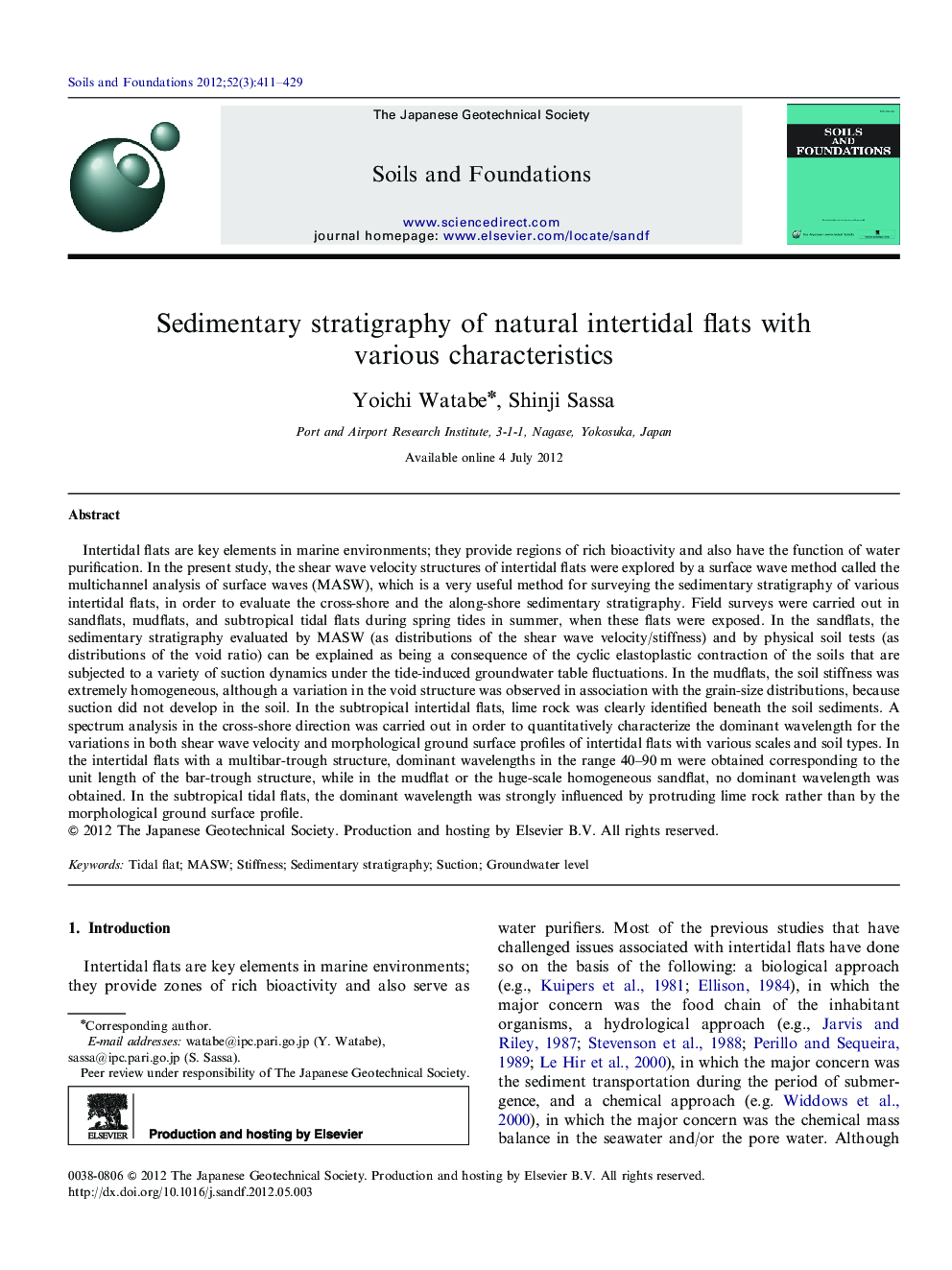| کد مقاله | کد نشریه | سال انتشار | مقاله انگلیسی | نسخه تمام متن |
|---|---|---|---|---|
| 307339 | 513352 | 2012 | 19 صفحه PDF | دانلود رایگان |

Intertidal flats are key elements in marine environments; they provide regions of rich bioactivity and also have the function of water purification. In the present study, the shear wave velocity structures of intertidal flats were explored by a surface wave method called the multichannel analysis of surface waves (MASW), which is a very useful method for surveying the sedimentary stratigraphy of various intertidal flats, in order to evaluate the cross-shore and the along-shore sedimentary stratigraphy. Field surveys were carried out in sandflats, mudflats, and subtropical tidal flats during spring tides in summer, when these flats were exposed. In the sandflats, the sedimentary stratigraphy evaluated by MASW (as distributions of the shear wave velocity/stiffness) and by physical soil tests (as distributions of the void ratio) can be explained as being a consequence of the cyclic elastoplastic contraction of the soils that are subjected to a variety of suction dynamics under the tide-induced groundwater table fluctuations. In the mudflats, the soil stiffness was extremely homogeneous, although a variation in the void structure was observed in association with the grain-size distributions, because suction did not develop in the soil. In the subtropical intertidal flats, lime rock was clearly identified beneath the soil sediments. A spectrum analysis in the cross-shore direction was carried out in order to quantitatively characterize the dominant wavelength for the variations in both shear wave velocity and morphological ground surface profiles of intertidal flats with various scales and soil types. In the intertidal flats with a multibar-trough structure, dominant wavelengths in the range 40–90 m were obtained corresponding to the unit length of the bar-trough structure, while in the mudflat or the huge-scale homogeneous sandflat, no dominant wavelength was obtained. In the subtropical tidal flats, the dominant wavelength was strongly influenced by protruding lime rock rather than by the morphological ground surface profile.
Journal: Soils and Foundations - Volume 52, Issue 3, June 2012, Pages 411–429